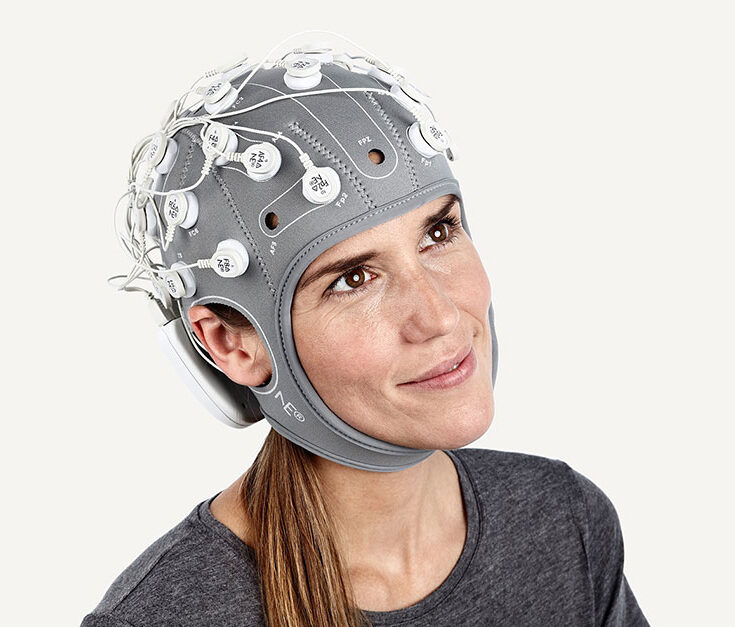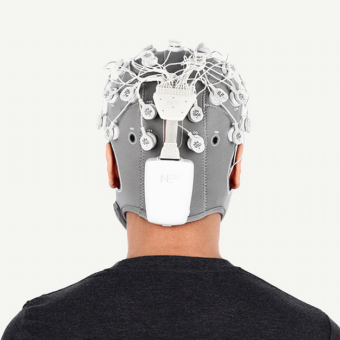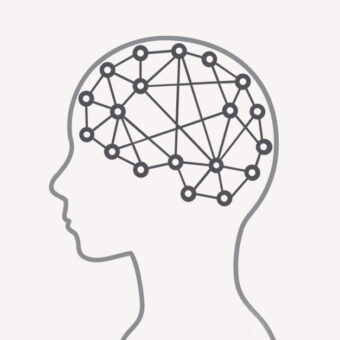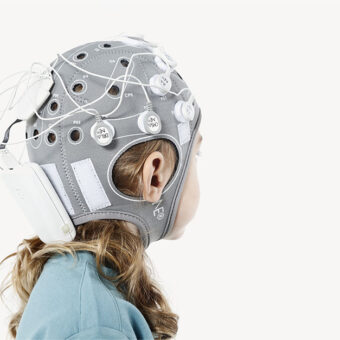Epilepsy, a neurological disorder characterized by recurrent seizures, affects millions worldwide. For decades, electroencephalography (EEG) has been a cornerstone in diagnosing and managing epilepsy. However, traditional EEG methods, often cumbersome and stationary, have limitations. The emergence of mobile EEG technology heralds a new era in epilepsy care, offering innovative solutions that address these challenges.
The evolution of EEG from traditional setups to advanced, noninvasive mobile devices marks a significant leap in neurological diagnostics. These modern EEG solutions promise enhanced patient comfort, convenience, and accessibility, transforming the way epilepsy is monitored and managed.
In this blog post, we delve into the world of mobile EEG technology, exploring its benefits over conventional methods, its effectiveness in epilepsy management, and its impact on patients and healthcare providers.
The Limitations of Conventional EEG
Conventional EEG has been the standard for epilepsy diagnostics for years. Yet, this traditional approach comes with notable limitations that can impact patient experience and diagnostic efficiency.
Traditional EEG setups often involve long setup procedures, including skin preparation, electrode attachment, and gel application. These processes are not only time-consuming but also cause discomfort to patients, removing them from their natural environment. The in-hospital scalp EEG solutions, while effective, are expensive and cumbersome, limiting their utility in continuous, long-term monitoring.
Moreover, the stationary nature of conventional EEG restricts patients’ mobility, making it challenging to record brain activity in various real-life scenarios. This limitation can lead to delays in capturing crucial epileptic events and hinder comprehensive monitoring of the condition.
In the next section, we will explore how mobile EEG technology addresses these challenges, offering a more patient-friendly and efficient solution for epilepsy management.
Advancements in Mobile EEG Technology
The advent of mobile EEG technology represents a significant breakthrough in neurological diagnostics and epilepsy management. These modern devices are designed with the patient’s convenience and comfort in mind, bringing a new level of flexibility to EEG monitoring.
Mobile EEG systems are lightweight, wireless, and far less intrusive than traditional EEG equipment. They allow for long-term monitoring without restricting the patient’s daily activities, enabling continuous data collection in a variety of settings, including at home and in natural environments. This adaptability provides a more accurate representation of the patient’s neurological state over time.
The design of these devices often involves fewer electrodes, simplified setup processes, and the elimination of cumbersome wires. Some mobile EEG systems even integrate advanced features like automatic seizure-detection algorithms, enhancing their diagnostic capabilities.
Furthermore, the portability of these devices opens up new possibilities for remote monitoring and telemedicine. Patients in rural or underserved areas, who previously had limited access to neurological care, can now benefit from advanced EEG monitoring.
In the following section, we will delve into the comparative effectiveness of mobile EEG devices, examining their performance against traditional scalp EEG in clinical studies.
Comparative Effectiveness of Mobile EEG
The efficacy of mobile EEG technology, when compared to conventional scalp EEG, is a crucial aspect of its adoption in clinical practice. Several studies have been conducted to evaluate the performance of mobile EEG devices in detecting epileptic seizures and abnormalities.
Recent research has demonstrated that mobile EEG systems can provide comparable data quality to traditional methods. Studies have tested various mobile EEG devices, focusing on their sensitivity and specificity in detecting epileptiform abnormalities. Furthermore, mobile EEG technology has been found effective in long-term monitoring, capturing significant epileptic events that might be missed in a conventional clinical setting. The ability to record continuously over extended periods offers a more comprehensive picture of a patient’s epileptic activity, leading to better-informed treatment decisions.
Another key advantage of mobile EEG is its potential for automated seizure detection. Some devices come equipped with algorithms capable of analyzing EEG data in real-time, providing timely alerts and interventions.
The comparison studies not only affirm the diagnostic reliability of mobile EEG but also highlight its advantages in terms of patient comfort and flexibility. By reducing the need for prolonged hospital stays and invasive monitoring, mobile EEG paves the way for more patient-centered epilepsy care.
In the next section, we will explore case studies and real-world applications of mobile EEG, further illustrating its impact on epilepsy management and patient experience.
Case Studies and Real-world Applications
Mobile EEG technology is not just a theoretical advancement; its practical applications in real-life scenarios have been transformative for both patients and healthcare providers. Let’s explore how various settings apply this technology and its impact on epilepsy management.
Case Study 1: Home Monitoring
One of the most significant applications of mobile EEG is in-home monitoring. Patients with epilepsy can use these devices in the comfort of their homes, allowing for continuous data collection without disrupting their daily routines. This approach not only enhances patient comfort but also provides clinicians with a more accurate picture of the patient’s condition in their natural environment.
Case Study 2: Emergency and Remote Areas
In emergencies or remote areas where access to traditional medical facilities is limited, mobile EEG devices have proven invaluable. They enable quick and efficient monitoring of patients, facilitating timely diagnosis and treatment decisions.
Case Study 3: Long-term Monitoring in Hospitals
Even in hospital settings, mobile EEG devices are being used for long-term monitoring. They offer a less intrusive alternative to conventional EEG, making the patient’s hospital stay more comfortable and less restrictive.
The feedback from patients and healthcare providers who have used mobile EEG technology has been overwhelmingly positive. Patients appreciate the comfort and freedom these devices offer, while healthcare providers value the ease of use and the quality of data provided.
The real-world application of mobile EEG technology underscores its potential to revolutionize epilepsy management, making it more patient-friendly and efficient.
In the concluding section, we will summarize the potential of mobile EEG technology in transforming epilepsy care and encourage continued research and adoption of these technologies in clinical practice.
Conclusion: Embracing the Future with Mobile EEG Technology
As we have explored throughout this series, mobile EEG technology stands at the forefront of a new era in epilepsy management. Its impact extends beyond mere convenience, offering a patient-centered approach that aligns with modern healthcare’s evolving landscape.
Mobile EEG devices have demonstrated their value in various settings, from home monitoring to emergency care. They represent a significant advancement in neurological diagnostics, providing a combination of comfort, efficiency, and accuracy. The technology’s flexibility in different environments, coupled with its potential for long-term monitoring, has opened new avenues for understanding and managing epilepsy.
The positive experiences of patients and healthcare providers further underscore the transformative potential of mobile EEG. This technology not only improves the quality of epilepsy care but also enhances the quality of life for those living with the condition.
As we continue to witness advancements in medical technology, it is crucial to support and encourage the adoption of innovative solutions like mobile EEG. The potential of these devices to revolutionize epilepsy management is immense, promising a future where diagnosis and treatment are more accessible, less intrusive, and more attuned to the needs of patients.



